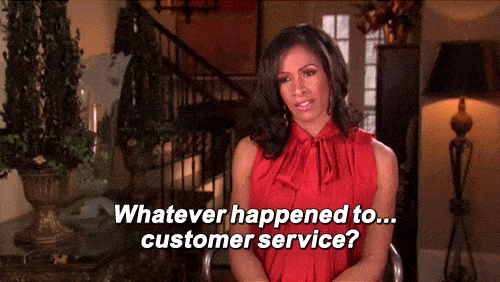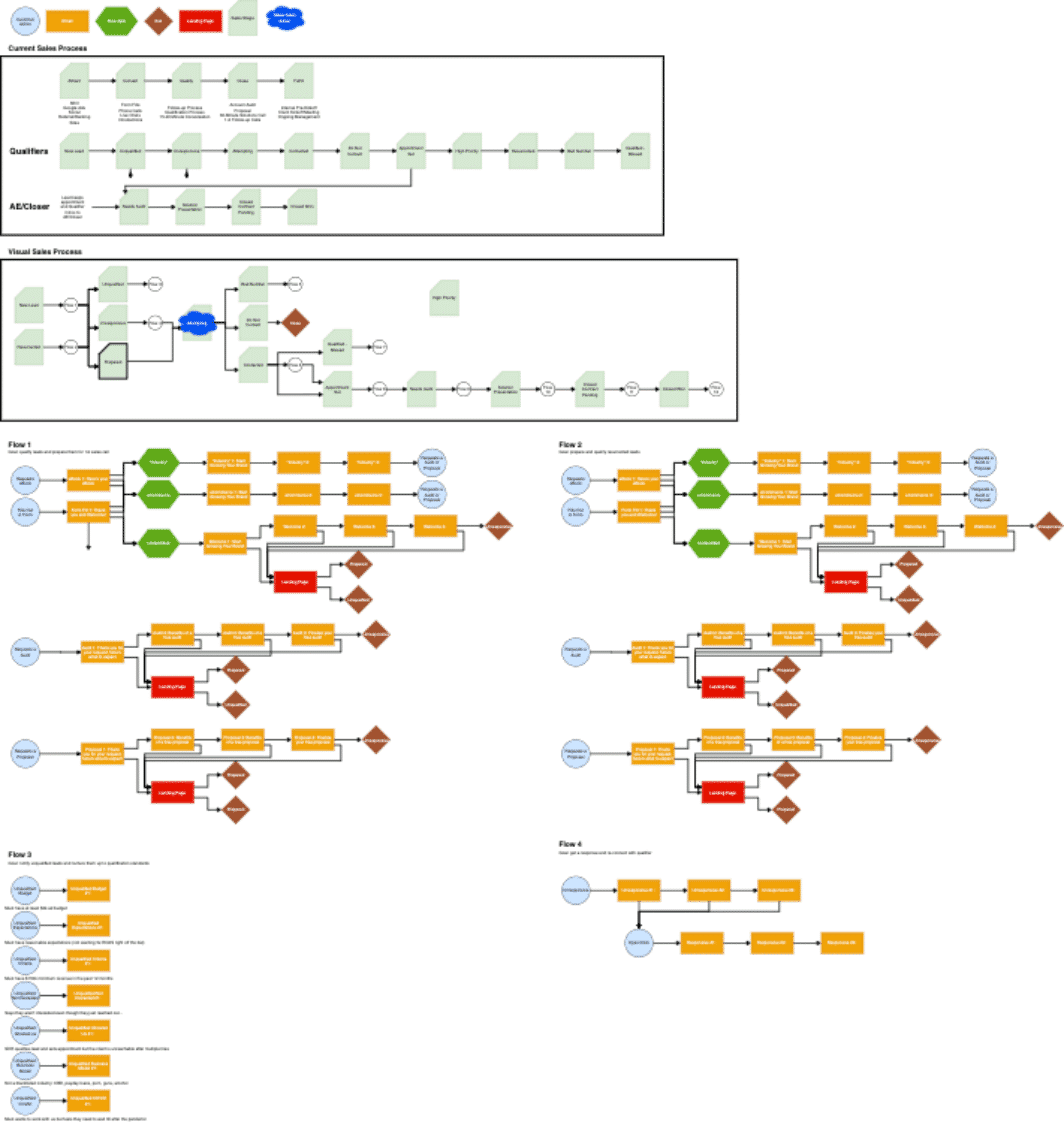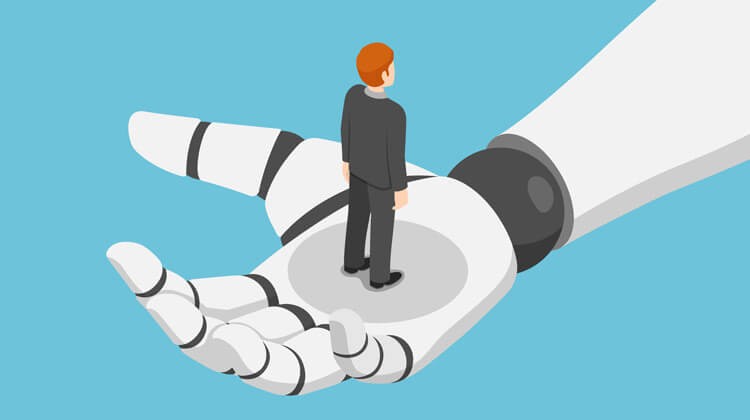Why Aren’t You Taking Full Advantage of B2B Marketing Automation Yet?
by Aden Andrus • June 11, 2020
Between all of the emails, scheduling conflicts, dropped appointments, text messages, phone calls and everything else it takes to turn a prospective client into a paying one, B2B marketing and sales can be a real pain sometimes.
Wouldn’t it be nice if you could just let a computer handle all of that nonsense? That way, you could focus your time on the things that really matter—not the distracting minutia eating up your day.
Well, I think you can see where this is going…
This is the whole idea behind B2B marketing automation—take all of the mind-numbing grind of B2B marketing and automate it.
Now, you might be thinking, but what about the “personal touch”? Odds are, the products, software or services you’re selling aren’t cheap, so your customers expect concierge treatment, right?

While it’s certainly true that your customers want to be treated like individuals—not numbers—the fact of the matter is that people like marketing automation.
A smart marketing automation strategy allows you to give your customers what they want, when they want it. B2B marketing automation is better for everyone.
Still not convinced? Let’s talk about why B2B marketing automation is so effective and why you should be putting more effort into automating your marketing and sales process.
Your Customers are On a Journey
Good B2B marketing and sales takes a lot of nurturing. You’re building a relationship between businesses, and there will be a lot of nudging, encouraging, reminding and helping along the way.
All of that takes time.
However, B2B relationships are just like normal relationships—if you don’t invest the time, the relationship will die.
Unfortunately, that can be hard to do when you’re trying to nurture dozens, hundreds or even thousands of relationships simultaneously. B2B marketing automation helps to bridge that gap.

You see, most of the interactions that help nurture your prospects along their journey to becoming customers don’t have to be personal to be effective. Obviously, the more personalized your interactions are, the more effective they will be, but in many circumstances, the added value of a one-on-one interaction is fairly minimal.
For example, reminders about an upcoming appointment aren’t less valuable because they’re automated. A follow-up email doesn’t have to be custom-tailored to be worth reading. Your customers don’t always have to chat with an actual person to get their questions answered.
As long as your marketing automation is providing the right value at the right time (and doesn’t feel canned), your customers won’t care whether it was automated or not.
Of course, to pull all of this off, you have to really understand your customers. If you don’t have good answers for the following questions, your marketing will come off as mechanical and forced:
- What sort of journey are your potential customers on?
- What are the key touchpoints on that journey?
- What needs do they have?
- What is the best way to meet those needs?
If you don’t fully understand your buyer journey (click here to learn more about what that really means), you’re not ready for marketing automation…or marketing in general, to be honest.
But, once you have a good grasp for your customers and their needs, B2B marketing automation will become your best friend. With it, you can give your customers what they want, when they want it. You’ll be giving them exactly what they need, and in response, they’ll be much more likely to give you their business.
Your Customers Like B2B Marketing Automation
No matter how good you are at your job, you can’t spend every second of your day working. Most of your customers will want something at an awkward time.
That isn’t good for anyone.
With B2B marketing automation, however, it doesn’t matter if a potential client starts a chat on Facebook at 3 am because they want to know what your pricing structure is. If you’ve got your chatbot set up properly, they’ll get the info they need and be happy to continue the conversation during your actual working hours.
With all of that in mind, here are just a few stats around marketing automation:
- The average return-on-investment for a decent email marketing program is 38:1
- Over 60% of people worldwide want businesses to use more SMS marketing
- Chatbots can answer up to 80% of routine questions
- 80% of companies saw an increase in leads thanks to marketing automation
- Automated lead nurturing converts 15-20% of leads to sales
- 76% of marketers see a positive ROI from marketing automation within one year of implementation
Clearly, B2B marketing automation works. It’s good for customers…and it’s good for you.
Unfortunately, despite all of this potential, most B2B businesses aren’t using marketing automation effectively. Yes, three-quarters of businesses are using some type of marketing automation, but to really take advantage of the potential of B2B marketing automation, you have to do more than just schedule social media posts on Buffer!
True B2B marketing automation is designed to nurture your potential customers through every step of their buyer journey. It’s deeply integrated into your marketing strategy and affects every channel you’re marketing on.
To really take advantage of the power of B2B marketing automation, you have to do more than schedule posts or set up a few email drips. You have to think about your buyer journey and what your customers want from each touchpoint.
Do it right, and your customers will love your marketing automation. Do it wrong, and you’ll frustrate, annoy and drive them away.
Taking B2B Marketing Automation to the Next Level
Odds are, you’re probably doing at least a little marketing automation right now, but what can you do to take things to the next level? There are a lot of options, but here are a few practical tips to help you get started.
Look at the Big Picture
The first step to creating an effective B2B marketing automation plan is to think about your buyer journey as a whole.
- Where in their journey are your prospects when they first encounter your business on a particular channel?
- What do they need to learn or do to progress?
- How do you help them get to the next stage in their journey?
Once you’ve thought through your overall journey, break it down into specific, manageable pieces and determine how you want to interact with your potential customers at each touchpoint.
For example, here’s a bird’s eye view of what our own buyer journey map looks like:

Note that the above are just the email flows for potential customers who are at one particular stage in their buyer journey. Depending on where and how we connect with them, we have a variety of other flows that potential customers may end up in.
The point is, to really develop an effective marketing automation strategy, you have to think through your buyer journey in detail. A lot of detail. You probably have a variety of buyer personas, each with their own needs and goals.
If you don’t take the time to figure out the right way to address all of that, your marketing automation won’t meet your customers’ needs and they end up frustrated and annoyed.
Build Out Email Drip Campaigns
When most people think of marketing automation, the first thing that comes to mind is email drip campaigns. There’s a reason for that. Between marketing and sales, B2B businesses send out a lot of emails.
Email is still one of the best marketing channels for B2B businesses. A lot of companies prefer to communicate with vendors and suppliers via email, so it’s a great way to get in front of (and stay in front of) potential clients.
With marketing automation, you can set all kinds of drips up once and then reap the benefits for months or years.
Until a prospect is actively interested, it’s often not very economical to send out individualized emails. With a well-planned set of adaptive email drip campaigns, though, you can provide all kinds of value without having to lift a finger.
As you can see from the journey map in the last section, it does take a fair amount of work to set up effective drip campaigns, but once the work is done, the payoffs are huge.
Use Chatbots
Chatbots are often seen as a B2C or customer service tool, but they have a ton of potential for B2B businesses as well. If you set them up correctly, you can use chatbots on social media or your website to give prospective customers a great experience.
No one likes sending a chat request in to a business…only to wait for minutes or even hours for a response.

With a smart chatbot setup, they can get the answer they need in seconds. Most requests tend to follow certain question-answer patterns. So, if you dive into your chat history and think about things from your customers’ perspective, it’s usually not too hard to set up response trees that will take care of most of your customer needs.
Again, like all good marketing automation, this will take some time to think through and set up. But, once it’s working, it will save you a ton of time and help you land additional customers.
Set Up SMS Marketing
SMS marketing can be a great marketing automation option for B2B businesses. 80% of professionals use SMS text messaging for business purposes and 53% of millennials prefer communicating via text to talking on the phone.
Here are some ways to incorporate SMS messaging into your marketing automation. You can use SMS to:
- Help set up and schedule appointments
- Send reminders about appointments
- Remind users about downloads
- Send useful content
- Gather information from leads
- Send out survey requests
And these are just the simple, easy options. If you get creative, there are tons of additional ways to use SMS messaging with marketing automation!
Conclusion
B2B marketing automation is one of the most effective ways to get more out of your marketing campaigns. If you take the time to set it up right, you and your customers will get all kinds of value from it.
Unfortunately, many B2B marketers never bother to make the necessary investment. They still get decent results, but they miss out on all kinds of potential value.
You can do things differently. It takes work, but the results are worth it. The question is, are you willing to do what it takes to make the most of your campaigns?
By the way, if you’d like help building out and optimizing an effective B2B marketing automation strategy (or any other aspect of your marketing), let us know here or in the comments. We’d love to help!
How do you feel about B2B marketing automation? Do you agree with our take? What tips do you have for other advertisers? Leave your thoughts in the comments.





